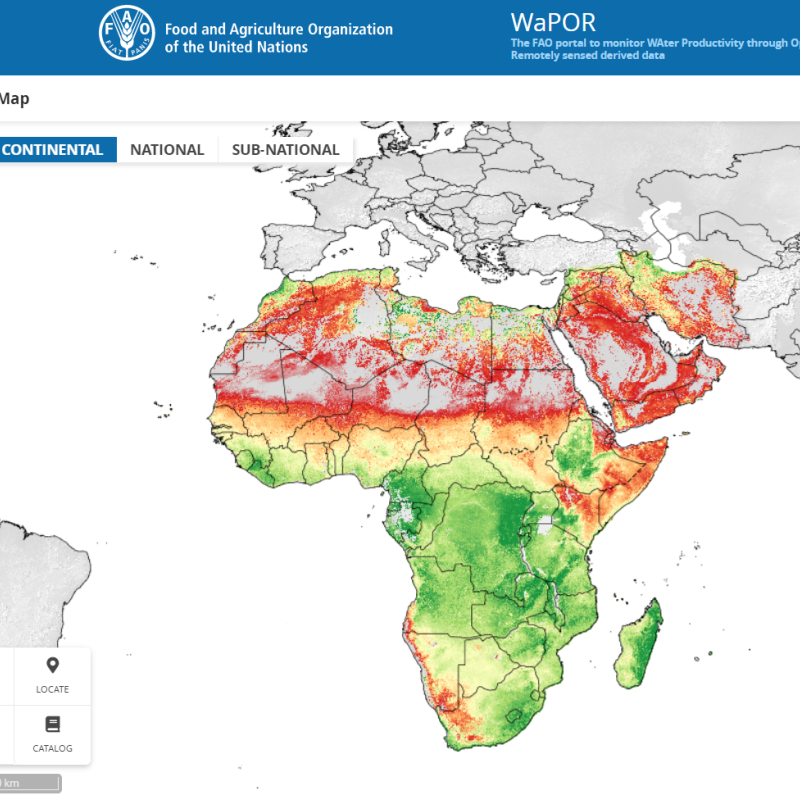Crop per Drop

Programming may be involved to get datasets and automize time-series processing. I can help learn Python, Matlab, R and Google Earth Engine JavaScript.
Farmers want to use less water to produce more food. The amount of food produced is either known from regional statistic authorities or can be computed from gross photosynthesis with help of crop-specific harvest indices. The amount of water that a plant uses to grow (“green” water) can be computed as (evapo)transpiration. The ratio of yield to seasonal evapotranspiration is called crop water productivity (CWP). The CWP dataset is available for the whole of Africa on the Food and Agriculture Organization (FAO) portal (WaPOR) since 2009. The accuracy of the dataset and its usefulness for decision-makers is the question of the study.
(1) validate WaPOR crop water productivity (CWP) for major crops and (
2) demonstrate the potential of the CWP data for water policymaking. You are going to use additional data layers, such as crop classification.
https://wapor.apps.fao.org/home/WAPOR_2/1
Blatchford, Megan L, Chris M Mannaerts, Yijian Zeng, Hamideh Nouri, and Poolad Karimi. 2019. “Status of Accuracy in Remotely Sensed and In-Situ Agricultural Water Productivity Estimates: A Review.” Remote Sensing of Environment 234 (September 2018): 111413. https://doi.org/10.1016/j.rse.2019.111413
Schyns, Joep F., Arjen Y. Hoekstra, Martijn J. Booij, Rick J. Hogeboom, and Mesfin M. Mekonnen. 2019. “Limits to the World’s Green Water Resources for Food, Feed, Fiber, Timber, and Bioenergy.” Proceedings of the National Academy of Sciences of the United States of America 116 (11): 4893–98. https://doi.org/10.1073/pnas.1817380116 .
